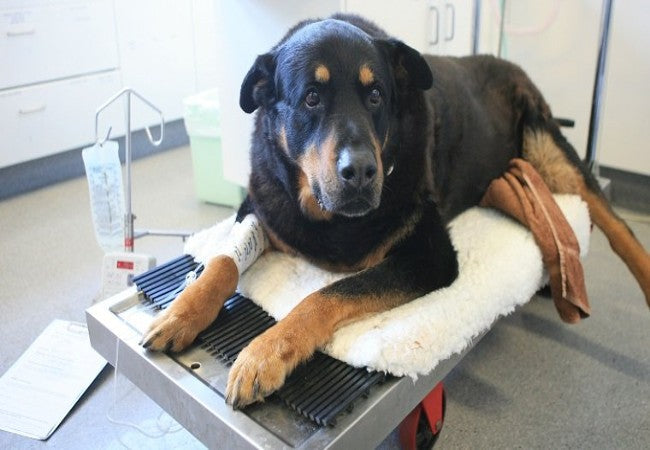von Willebrand Disease in Dogs: Vet’s 2025 Guide 🩸🐶

In this article
von Willebrand Disease in Dogs: Vet’s 2025 Guide 🩸🐶
By Dr. Duncan Houston BVSc
Hello—I’m Dr Duncan Houston BVSc, veterinarian and Ask A Vet founder. von Willebrand Disease (vWD) is the most common inherited bleeding disorder in dogs, caused by a deficiency in von Willebrand Factor (vWF), a protein essential for blood clotting. In this vet‑approved guide, I’ll walk you through:
- How vWD develops genetically
- Breeds most often affected
- Recognizing clinical signs and bleeding episodes
- Diagnostic tests and classification of vWD types
- Safe treatment, surgical precautions, and long-term care
- Breeding considerations and genetic testing
- Ask A Vet tools for monitoring and care coordination
1. What Is von Willebrand Disease?
vWD occurs when dogs have low levels or dysfunctional vWF protein, which normally helps platelets adhere and initiate clotting. Without it, even minor injuries can lead to extended bleeding.
2. Inheritance & Affected Breeds
- vWD is autosomal recessive or dominant depending on the type.
- Commonly seen in Doberman Pinschers, Scottish Terriers, Shetland Sheepdogs, German Shorthaired Pointers, and others.
- Carrier dogs may bleed mildly; affected dogs (homozygous) often show more significant episodes.
3. Clinical Signs
- Nosebleeds after excitement/vet visits or warm weather.
- Gum bleeding, bruising, prolonged bleeding from minor cuts or surgical sites.
- Bleeding from dog fights or nail trims, heavy menstrual bleeding in females.
4. Diagnosis & Classification
- vWF antigen assay measures the protein level in blood.
- Buccal Mucosal Bleeding Time (BMBT) tests platelet adhesion ability.
- DNA testing confirms mutation and informs breeding decisions.
- vWD is categorized into Type I (partial deficiency, most common), Type II (dysfunctional vWF), and Type III (severe deficiency).
5. Treatment & Surgical Precautions
- Desmopressin (DDAVP) raises vWF levels temporarily—ideal before surgery or dental cleaning.
- vWF-rich plasma or cryoprecipitate infusions for severe bleeding.
- Avoid NSAIDs and aspirin; use acetaminophen or short-course opioids if needed.
- Provide long-term monitoring and ensure easy access to emergency vet care after trauma.
6. Breeding & Genetic Counseling
- Test breeding dogs—avoid breeding two carriers or a carrier with an affected dog.
- Breed from known clear dogs (N/N) to reduce mutation prevalence.
- Register results with breed clubs; educate new owners about vWD.
7. Ask A Vet Tools for Monitoring
- Record bleeding events, nosebleeds, and bruises with time stamps
- Track DDAVP administration, clinic visits, and lab results
- Alert owners before grooming, vaccinations, or surgeries
- Provide emergency protocols, vet contact lists, and medication reminders
📌 Final Thoughts from a Vet
Von Willebrand's Disease is a manageable genetic bleeding disorder when diagnosed early and managed properly. With appropriate testing, safe treatments, bloodwork, and breeding strategies, affected dogs can live full lives. Ask A Vet’s tools help you stay proactive, track symptoms, and coordinate care—keeping your dog safer. 🐾❤️






